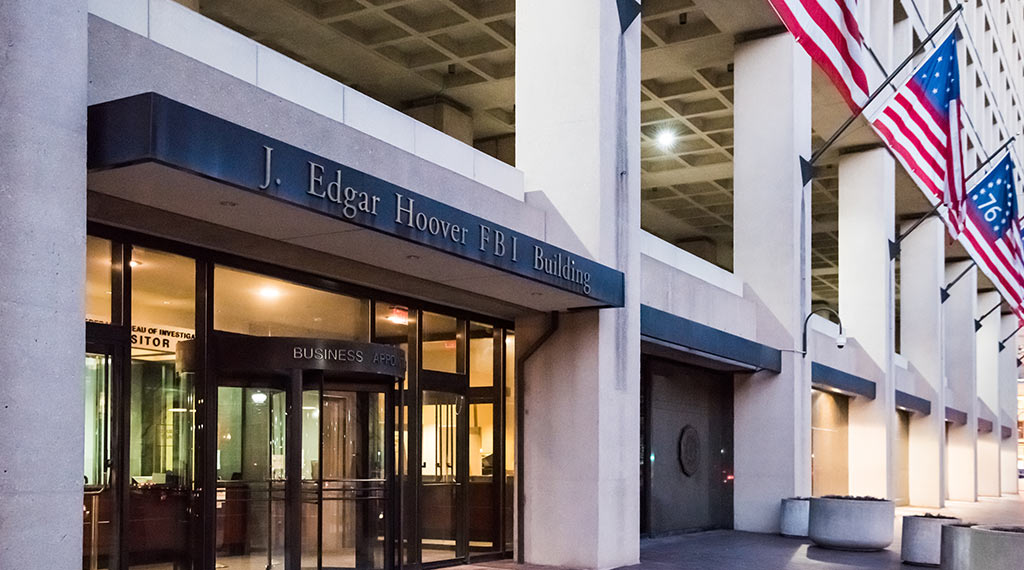
The nation remains on edge, awaiting more information regarding the motive of Donald Trump’s would-be assassin, 20-year-old Pennsylvania man Thomas Matthew Crooks. Crooks, who opened fire from an unsecured rooftop, very nearly killed the former president during a campaign speech in Butler, Pennsylvania. Trump was wounded in the right ear and escaped death by millimeters. One audience member was killed and another wounded.
Many serious questions have emerged. How was Crooks able to penetrate the security bubble surrounding a former president who is also the leading candidate? Why wasn’t Crooks apprehended earlier, or shot when first observed with a rifle? Why did the head of the Secret Service say that the gently sloped roof whence the shots were fired was too steep to post an agent?
We may never get answers regarding the shooter’s intentions and access because the lead agency responsible for investigating, the FBI, is utterly unreliable and aggressively politicized, with a decade-long track record of deliberately obfuscating the motivations for terror attacks from all manner of threats, both foreign and domestic.
Consider some of the following examples:
Following the 2009 attack on Fort Hood by Army Major Nidal Hasan, the FBI publicly declared there was “no information to indicate Major Nidal Malik Hasan had any co-conspirators or was part of a broader terrorist plot. The investigation to date has not identified a motive, and a number of possibilities remain under consideration.”
The FBI made this statement even though they had previously investigated Hasan for communicating with Al Qaeda arch-terrorist Anwar al-Awlaki, and Hasan had literally given a PowerPoint presentation to a group of military doctors explaining why Muslim soldiers in the U.S. have a religious doctrinal obligation to wage jihad on their fellow soldiers.
The U.S. government would formally rule the shooting an act of “workplace violence.”
In 2014, Mohammad Youssuf Abdulazeez opened fire on a recruiting station in Chattanooga, Tennessee. The FBI announced the shooter’s motives as “unclear.” It was subsequently revealed that the shooter had maintained a public blog where he discussed jihad, and Abdulazeez’s father had spent time on a terrorism watchlist.
In 2016, FBI officials openly stated that they would investigate whether Pulse Night Club shooter Omar Mateen was motivated by his own repressed homosexual identity when he opened fire on the Orlando night club. However, the FBI was already aware that Omar Mateen was a member of the Islamic State terrorist group and had committed the attack in their name, because the jihadist called 911 from the scene of the attack and declared his motivations. Those 911 tapes were initially redacted by authorities but later became publicly known. It was later revealed that there was no evidence Mateen knew the club was a popular gay hangout before conducting the attack.
Also in 2016, Somali refugee Dahir Adan yelled “Allahu Akbar” and asked his victims if they were Muslims before stabbing shoppers at Crossroads Center in Minnesota in an attack later claimed by the Islamic State. Yet as late as a year later, the FBI complained about the “difficulty that persists” in determining the attacker’s motivation.
In 2017, James Hodgkinson, identified by investigators as an “an anti-Trump, anti-Republican supporter of Bernie Sanders,” opened fire on GOP congressional members during a practice session prior to the Congressional Baseball Game. According to eyewitnesses, Hodgkinson asked whether the team on the field was made up of Republicans before opening fire, very nearly killing Congressman Steve Scalise.
The FBI categorized the incident as “suicide by cop,” even though Hodgkinson had a target list of GOP representatives in his pocket, and the police security present at the event were in plain clothes.
In the case of the attempted assassination of Donald Trump, media reported that the FBI had declared that they believed Crooks acted alone, yet at the same time, the FBI announced that they had yet to gain access to a phone found on the shooter’s body. The phone was later unlocked.
All of these incidents are a reflection of an FBI which is more interested in narrative enforcement than law enforcement. That narrative remains that, despite all evidence to the contrary, it is pro-Trump conservatives, rather than radical leftists or jihadist terrorists, who are the primary threat. Following the near murder of the GOP’s presidential candidate, the FBI and DHS rushed out an “intelligence bulletin,” which warned of pro-Trump “retaliatory acts of violence.” This mirrors the years of government propaganda during the Global War on Terror, when the priority of law enforcement following every jihadist terror attack was preventing a violent “backlash” against Muslims.
Yet one doesn’t have to be much of an investigator to figure out where violent rhetoric is emanating from as leftist protestors outside the Republican National Convention unapologetically tell media “it’s a shame the person missed.”
Meanwhile, FBI whistleblower Kyle Seraphin posted on X regarding an FBI employee who posted a meme expressing disappointment that the assassin had failed. That employee is reportedly in the “Identity Research Department” with a role in overseeing firearms background checks.
All of this adds up to a law enforcement agency more invested in defending a political narrative pushed by the Biden Administration, which has endeavored for the past four years to paint conservative Americans as the enemy, than in pursuing the facts behind major acts of terror and violence. The FBI is in dire need of major reorganization and depoliticization if America is going to have a national law enforcement agency that fights crime, rather than perform elaborate cover-ups in sensitive cases.
- Terrorist Designation for Muslim Brotherhood a Huge Blow: Kyle Shideler - November 25, 2025
- Antifa groups designated as FTOs - November 17, 2025
- Kyle Shideler Testifies at the Senate Judiciary Subcommittee Hearing on Political Violence - October 29, 2025
